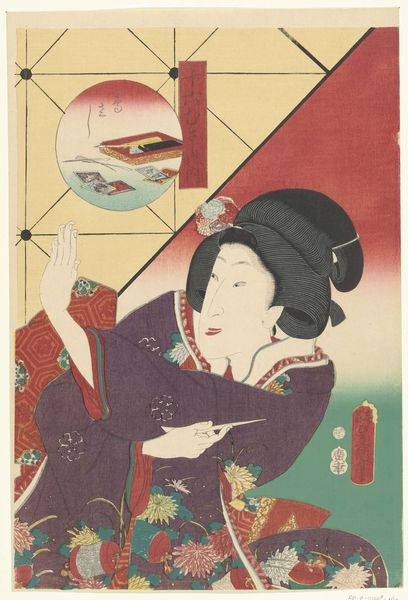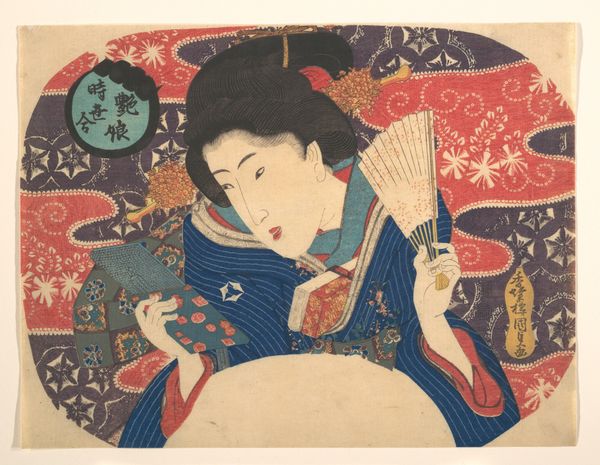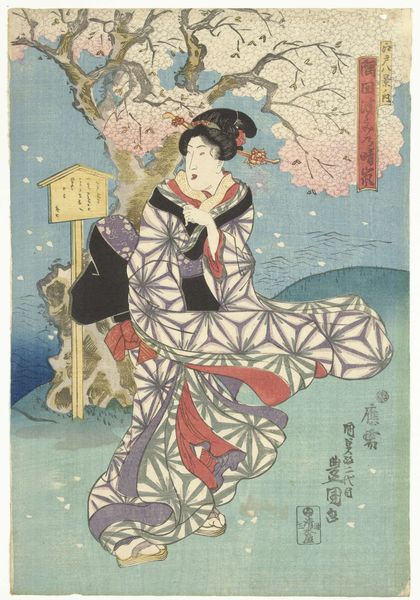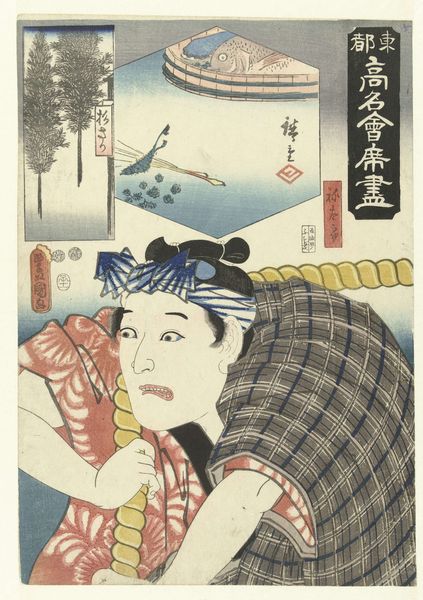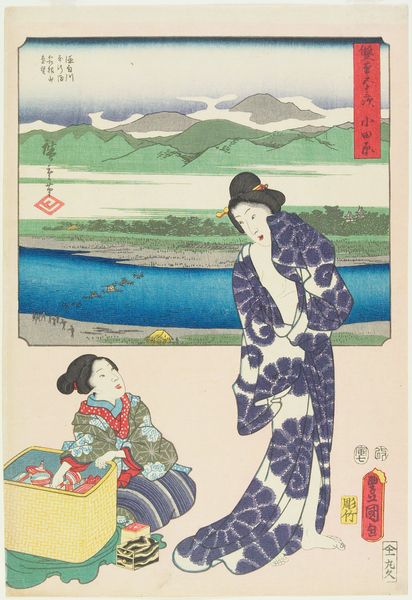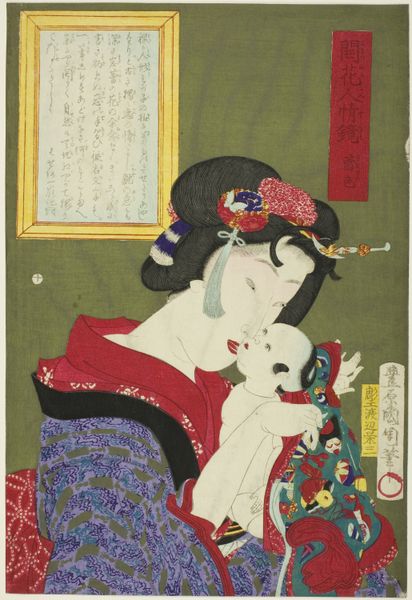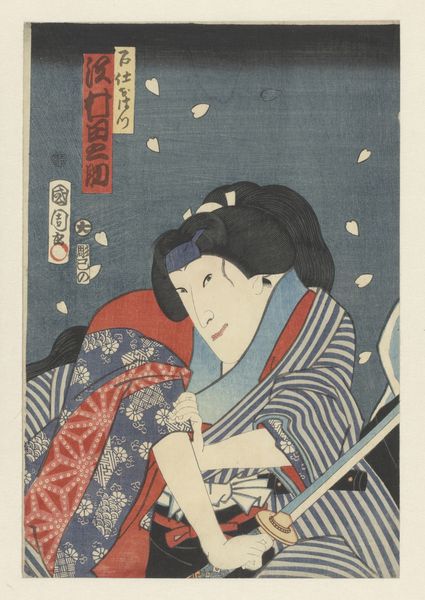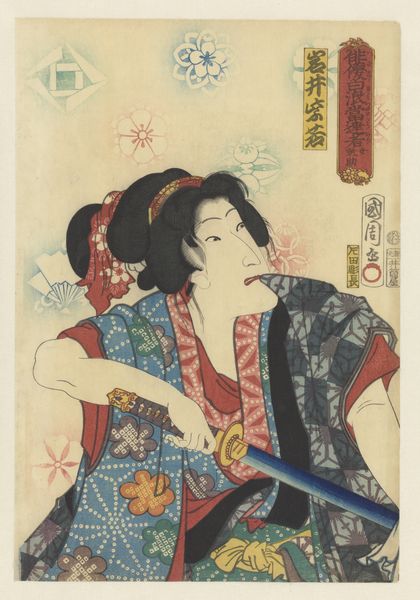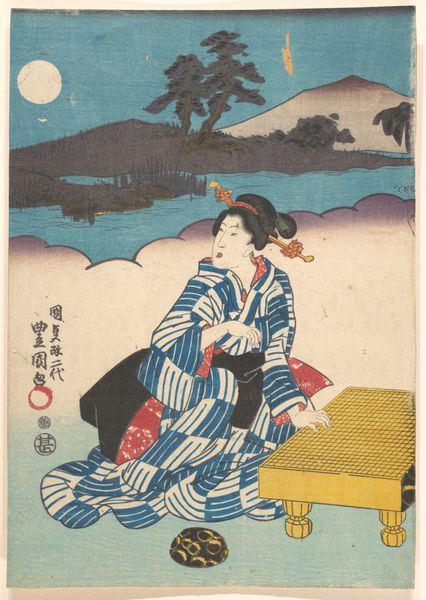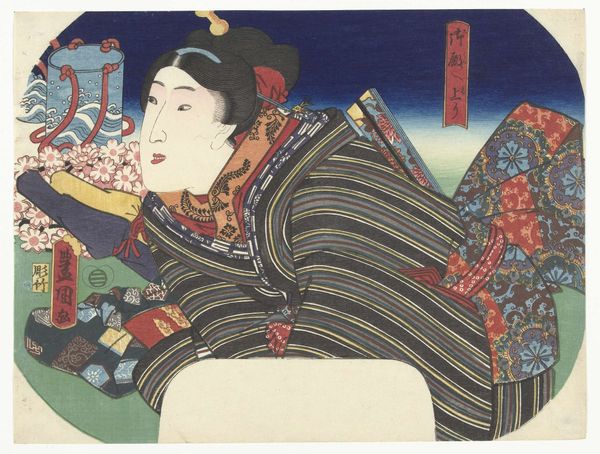
print, woodblock-print
#
portrait
# print
#
asian-art
#
caricature
#
ukiyo-e
#
vase
#
figuration
#
flat colour
#
woodblock-print
#
watercolour illustration
#
genre-painting
Dimensions: height 367 mm, width 252 mm
Copyright: Rijks Museum: Open Domain
Curator: Here we have Utagawa Kunisada's woodblock print, "Sake fles en kopje," created around 1861. It’s currently housed here at the Rijksmuseum. What strikes you immediately about this print? Editor: There's a bold, almost confrontational stillness. She is central and monumental within the composition. And that dramatic shift in perspective where those coloured panels converge really flattens the space, intensifying the figure's presence. It’s quite striking! Curator: Kunisada, a master of ukiyo-e, often infused his works with layers of symbolism. Observe how the sake bottle and cup become not just objects, but potent signifiers. What deeper readings can we draw from such ubiquitous items in Japanese culture? Editor: The presentation of sake connects with ritual, social cohesion, even resistance to cultural change during that era. Japan was undergoing significant political transformation as this work was made; even the act of sharing sake became a negotiation between tradition and emerging modernity. What do you make of that symbolic roundel above? Curator: The inset, that roundel depicting delicacies, hints at a life of cultivated pleasure and ephemeral beauty so integral to ukiyo-e’s fascination with the floating world. The composition overall is an intersection of material and cultural echoes that extend across centuries. Editor: Precisely! But I'd challenge its perceived 'ephemerality.' This image captures a specific moment of tension and invites us to ask: Who gets to partake in this refined existence, and at whose expense? And how does Kunisada navigate this discourse within a popular art form? Curator: The genius lies, perhaps, in how Kunisada doesn’t dictate, but invites interpretation, imbuing these familiar objects with renewed emotional weight. The flat color fields further concentrate one's focus onto the depicted figure. Editor: Exactly. It underscores the complex relationship between the observer, the observed, and the cultural context in which these objects are imbricated. It pushes me to examine these artifacts beyond their pretty surfaces, encouraging interrogation rather than passive consumption. Curator: Well said. Ultimately, Kunisada's print reminds us that even the most ordinary objects can hold profound cultural significance, mirroring shifting values and ideologies. Editor: And perhaps, inspire us to question the established order and seek beauty within resistance. Thank you for opening my eyes to these depths.
Comments
No comments
Be the first to comment and join the conversation on the ultimate creative platform.
